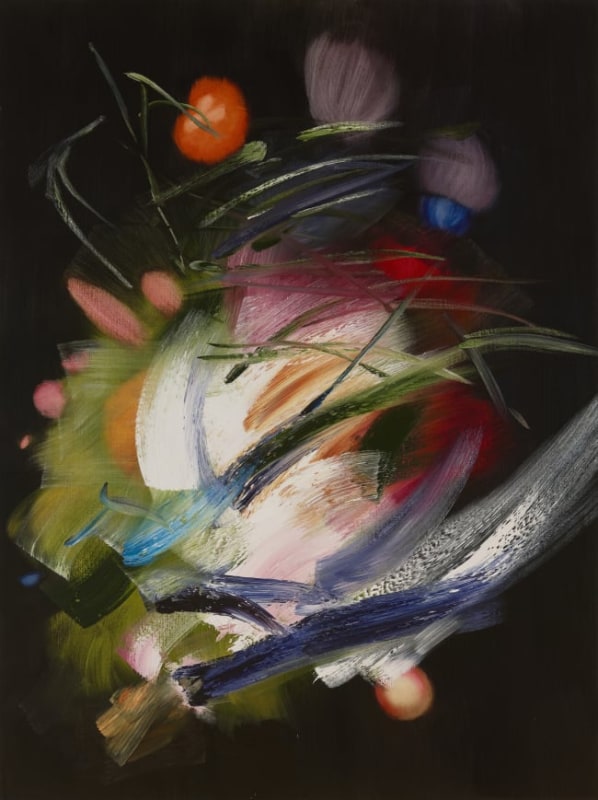ELISE ANSEL
Elise Ansel was born in New York City in 1961. She studied a BA at Rhode Island’s Brown University, where she later returned as a visiting artist and lecturer. An MFA in Visual Art followed at Southern Methodist University in Texas.
Her paintings are an attempt to translate Old Masters into contemporary artistic language, and she has been exhibiting them in the UK and US for more than 35 years. Elise currently lives in Portland, Maine, and is represented by Cadogan Contemporary in London and Miles McEnery Gallery in New York. www.eliseansel.com
TALKING WITH ARTISTS
Flowers in a Glass Vase I springs from Rachel Ruysch’s 1704 painting Flowers in a Glass Vase, which is in the Detroit Institute of Arts Museum (DIA) collection. In 2019, gallerist David Klein saw my work and asked if I would create an exhibition in “conversation” with masterpieces at the DIA. I was inspired by many of the paintings in the collection, but the encounter with two works by female Old Masters (or “Old Mistresses” as they were famously called by Griselda Pollock and Rozsika Parker), Ruysch’s Flowers in a Glass Vase and Artemisia Gentileschi’s Judith and her Maidservant, proved transformative. I was energised by the opportunity to align myself with female artists from another time, another place; to draw strength and inspiration from their accomplishments, and to extend what they had begun.
Ruysch’s Flowers in a Glass Vase was crawling with details I wanted to paint. The richness of its voluptuous floral forms and the teeming insect life within the painting are evocative and open to interpretation. They are a celebration of both feminine energy and nature; a visual articulation of Sir David Attenborough’s idea that “the natural world is... the greatest source of so much in life that makes life worth living.”
For the first time I began to make collages, hybridising sections of my own previous transcriptions with details of my paintings of the Ruysch. I was excavating details within details; cropping, cutting and pasting; zooming in, pinching out; allowing the visual density of the source to reveal itself on deeper scrutiny...

